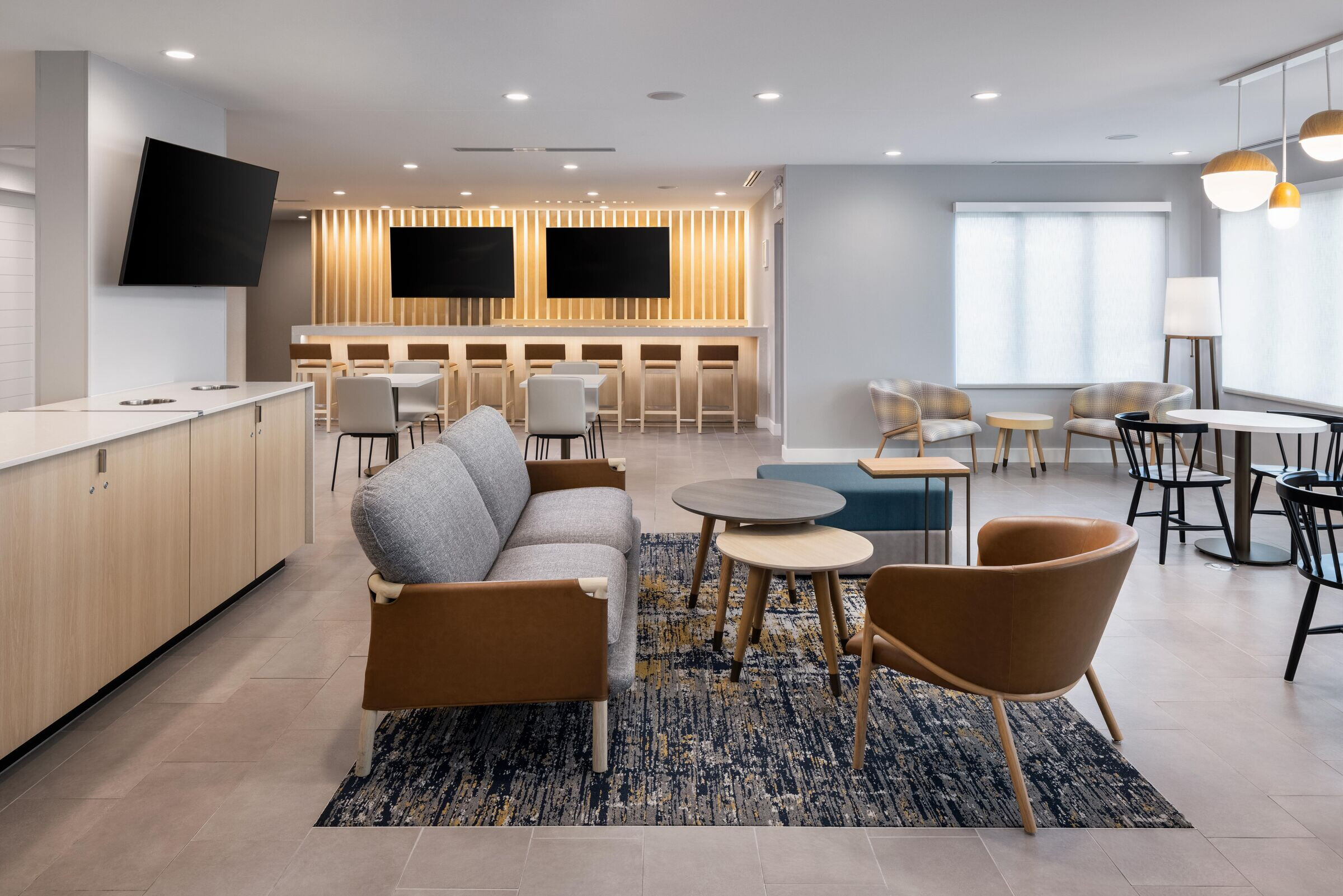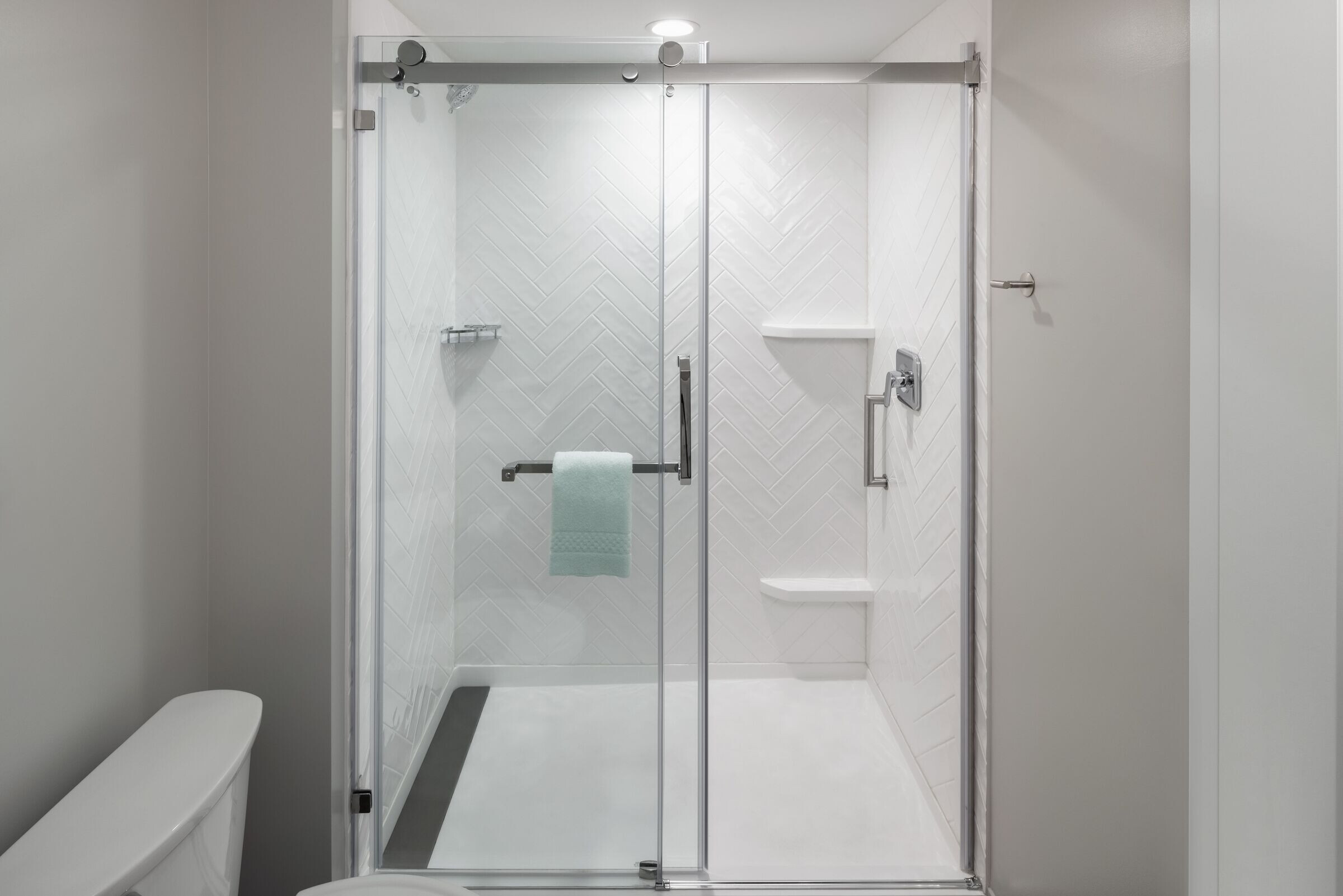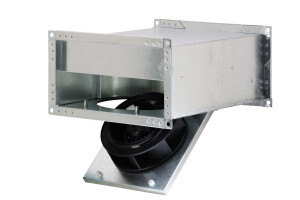Outside of an Airbnb, there was a severe lack of commercial extended-stay lounging in West Kelowna, British Columbia, Canada. Prominent attractions to the area include Okanagan Lake, Tsinstikeptum Nature Reserves 9 & 10, opportunities for cross-country riding, beaches, a string
of wineries, and close proximity to the Two Eagles Golf Course.

Brought to the region by ABC Group Hotels Ltd., the Towneplace Suites of West Kelowna features Marriott amenities and quality minus the premium prices. For professionals, this atmosphere balances work life with pleasure. Each suite uses a fully equipped kitchenette, a separate work space, a guest laundry area, and a separate living and sleeping area. The hotel features amenities such as an outdoor fire pit, grilling sections overlooking Okanagan Lake and surrounding mountains, and an indoor pool and hot tub.

The actual building itself, the six-story Marriott hotel has 115 guest suites. Each suite uses two exhaust fans: one in the bathroom and one in the kitchenette. The toughest challenge with this build came down to regulations from the National Building Code of Canada, and Marriott’s Global Design Standards, and satisfying them both. Because of the principal exhaust fan setup, rooms like kitchenettes and bathrooms are required by both standards to use supplemental exhaust fans to exhaust indoor air pollutants at their source. And with kitchen exhaust, the 2020 version of the National Building Code of Canada has special requirements; Section 9.32.3.7 states,

“1) ...a supplemental exhaust fan not rated less than 50 L/s shall be installed in each kitchen.
2) A supplemental exhaust fan is not required in a kitchen where the only exhaust air intake for the principal ventilation fan is located in that kitchen.
3) A supplemental exhaust fan is not required in a kitchen where the principal ventilation fan draws from that kitchen and other rooms, provided a) the principal ventilation fan can be switched to a high exhaust rate equal to not less than 2.5 times the minimum normal operating exhaust capacity…”
A supplemental exhaust fan was required in this setup because of the limitations of the principal exhaust fan. The exhaust air intake for the principal ventilation fan is in the living area, and the principal ventilation fan is not able to exhaust at 2 & ½ times the minimum normal operating speed; thus, according to Section 9.32.3.7, a supplemental exhaust fan would be required.
Further complicating the issue are the requirements set forth by Marriott’s Design Standards. Fantech was not able to acquire a copy of these standards, but was able to speak with the general contractor on the job, Mark Hamman, CEO and President at IMC Construction.

“Marriott’s hotel design standards are very strict. The Marriott corporation places a huge emphasis on good IAQ, and the National Building Code of Canada has their own set of regulations as well. Fusing these two requirements together required careful consideration by KD engineering and implementation by the HVAC contractors at CSD Mechanical,” he told Fantech. “Marriott’s design standards require a certain level of in suite air movement, and it requires exhaust fans from the kitchenette and the bathroom to be tied together with a central duct, and exhausted out through the roof.”
Additionally, to meet Section 9.32.3.7.1) of the National Building Code, KD engineering had to specify kitchenette exhaust fans rated above 50 L/s (106 CFM) at 0.4-inch water column. For this build, they specified Fantech FRD 12-6 inline duct fans for kitchenette exhaust. And according to AMCA certified performance values, the FRD fan rates well above the minimum 50 L/s at 0.4-inch water column. These fans are rectangular, centrifugal inline duct fans designed for areas with limited space and large ventilation needs. With an accessory speed controller, the FRD fans can run at different fan speeds. In this instance, the speed control option helped contractors with implementation, as the further distance from the roof, the faster the fans have to run.

Moreover, the kitchenette exhaust fan likely will go unnoticed by most guests. As in some rooms, there also is a ductless range hood above the stove top. While cooking, guests might turn on the range hood, thinking they are removing smoke and odors from the room. What they may not realize, however, is that this range hood simply recirculates the air within the suite. Additionally, Marriott’s design standards and the National Building Code of Canada require supplemental exhaust fans to operate with other electrical systems; like a light switch. As a result, IMC construction decided to wire the fans as such and took the exhaust control responsibility away from the guest. With its silent operation from being installed in the ceiling and connection to well-insulated ducts, the exhaust fan is barely audible.

“What we find with ducted exhaust fans is that when you leave it completely in the control of the customer, they won’t turn it on when they should,” Mark told Fantech. “So as I say, having a ductless range hood with a filter gives off a placebo effect. The range hood is something the guest can play with and not affect the air quality whatsoever. This setup gives the guests a sense of security, but at the end of the day, we’ve already taken care of the exhaust.”













































